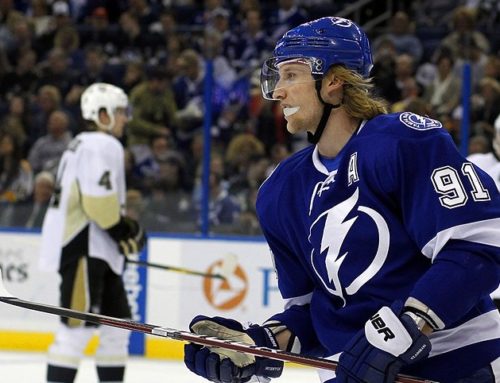Salary Caps, Pt. 3: Setting Your Cap Number
Glen Hoos
2012-02-25

Initially in this cap-related series, we considered reasons for and against incorporating a salary cap in your fantasy league. We then examined the two basic types of cap leagues: those which use real NHL salaries and those which assign fantasy salary values to players, whether through a player auction or another mechanism. Choosing between these alternatives is the first step to setting up your cap league.
With that decision made, your next challenge as commissioner is determining your cap number. As with most rule issues, the question is more complex than it might first appear. But hey, at least it doesn't have to be collectively bargained!
Fantasy Salary Caps
We'll start with leagues where you're creating your own player salaries (not using NHL salaries). This is the easier scenario when it comes to settling on a cap limit, because it almost doesn't matter what number you choose. As long as you set the cap number before you assign player salaries, the salaries will be dictated in large part by the cap number. Whatever your cap, the salaries will fall in line accordingly.
For example, let's look at the auction draft system. The value that GMs place on players as they bid will reflect the cap limit that you have set. In my experience, whether you set the cap at $40 million, $65 million or $100 million, you'll likely find that the top paid players in your league will go for about 16-20% of the cap value. That seems to be what most managers feel comfortable devoting to the Crosbys, Ovis and Stammers of the world. In a $40 million league, you can expect the superstars to fall into the $7-9 million range; in a $100 million league they could be valued up to $20 million. All other salaries will descend from there. There's no real benefit or drawback either way; it's just a matter of preference.
You'll also want to set a minimum player salary, which again will be a function of your overall cap number. In a $40 million league, I'd make it no more than $500k, and possibly even less. Keep in mind, in an auction league, the salary distribution tends to be quite uneven, with teams often overpaying for the bigger names, and then compensating with a glut of players making close to the league minimum. Many teams fall prey to overspending early in the auction when the best players are on the block, leaving them to scramble later in the draft to fit the rest of their team under the cap. For the patient manager, there are steals to be had in the middle rounds.
The bottom line is, when you create your own salaries, you've got lots of flexibility to set the cap limit wherever you want, as player values will ultimately conform to the cap.
NHL Salary Caps
Things get quite a bit more complex when it comes to setting a cap number based on NHL salaries. The naive commissioner may think, "If we're using NHL salaries, shouldn't we just use the NHL cap limit?" The answer is: it depends.
The NHL cap is designed for a league that is 30 teams deep, with 23-man active rosters. So, if your fantasy league has 30 teams with rosters of 20+ players, then the NHL cap will probably work quite well for you.
But that doesn't describe most fantasy leagues. The average fantasy league has about 12 teams, with roughly 250 players on active rosters (compared to 700 in the NHL). In a league of this size, adopting the NHL cap limit could result in some unforeseen consequences.
Without getting all mathematical on you, let's put some numbers to this. Statistically, the average NHL team will have only 8 or 9 of the league's top 250 paid players on their roster. Now, if we assume that the top 250 paid players are the most desirable 250 fantasy players (an over-simplification of course, but sufficient for this illustration), in a 12-team league, the average squad will have about 20 of these players on their roster. Or to put it another way, your league will be made up almost entirely of players who are in the top half of NHL salary earners. Based on this year's salaries, your average team will have a total cap hit of $80 million or more.
So, you can see the problem with using the NHL cap limit in a 12-team league. If every team has to come in below $64 million, teams are going to have to leave better (more expensive) players undrafted, in favour of lower producing (cheaper) options. The overall quality of the players in your league will suffer because you adopted a cap limit that isn't a good fit for the size of your league.
To avoid this problem, you have to factor in the size of your league when setting your cap limit. For the average 12-team league with 20-22 man rosters, a number around $85 million would generally work pretty well. All teams can build very solid rosters with that number, yet it's low enough to keep the best teams from icing too many superstars. The fewer teams and/or smaller rosters you have, the higher your cap should be to allow all the best players to be part of your league.
What's been your experience? What cap limits do you play under, and how did you determine your numbers?





 BUF
BUF N.J
N.J PHI
PHI MIN
MIN VAN
VAN FLA
FLA TOR
TOR CGY
CGY VGK
VGK